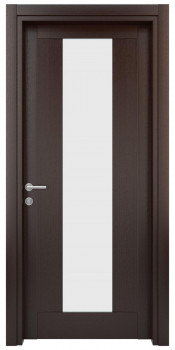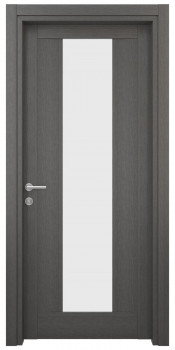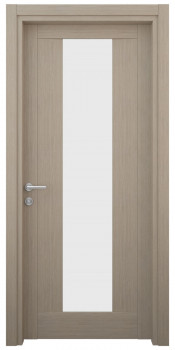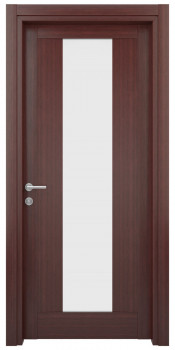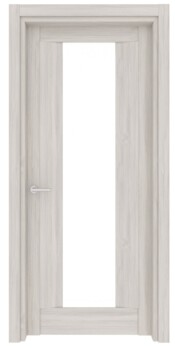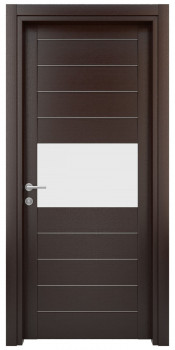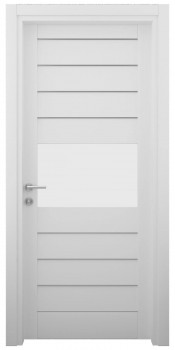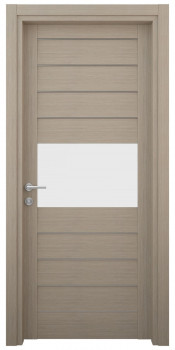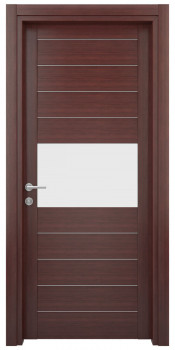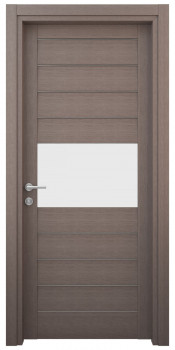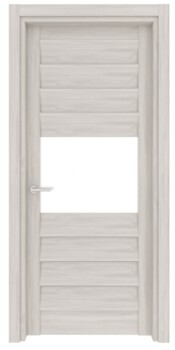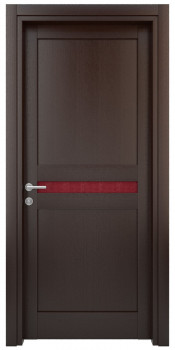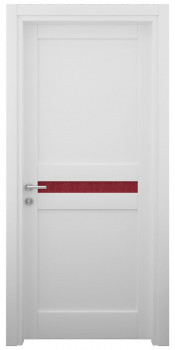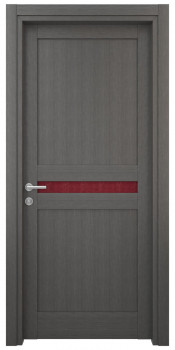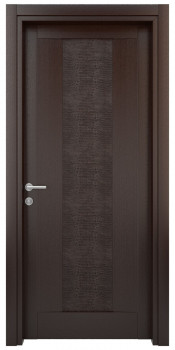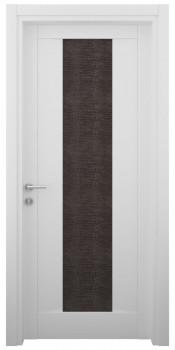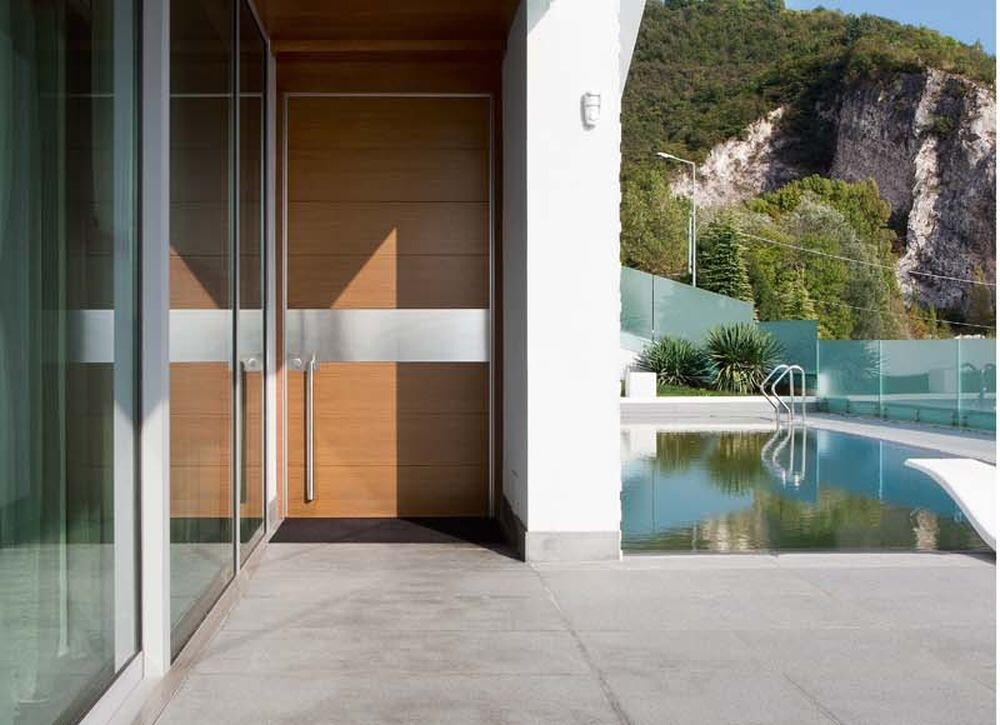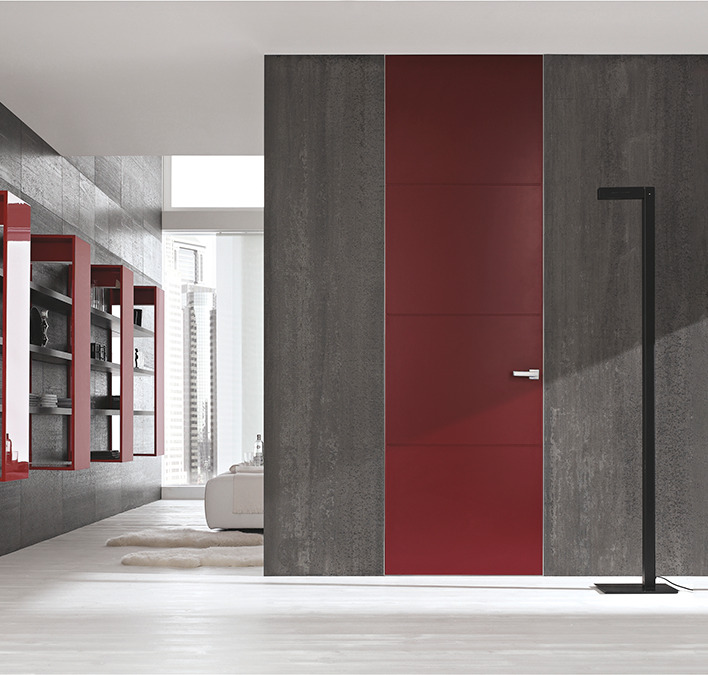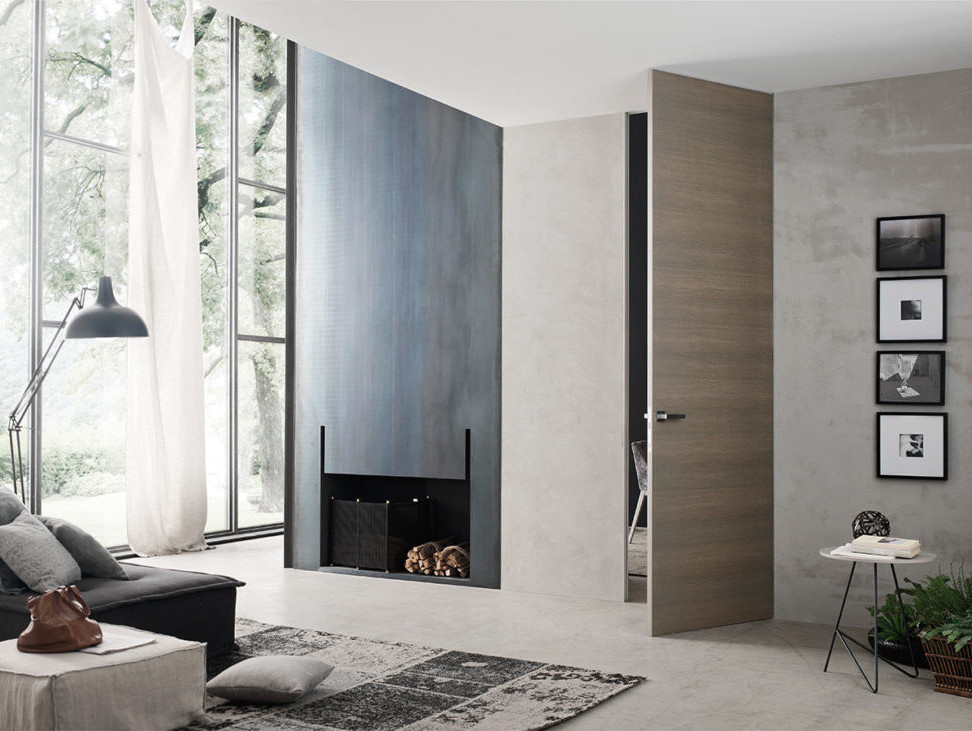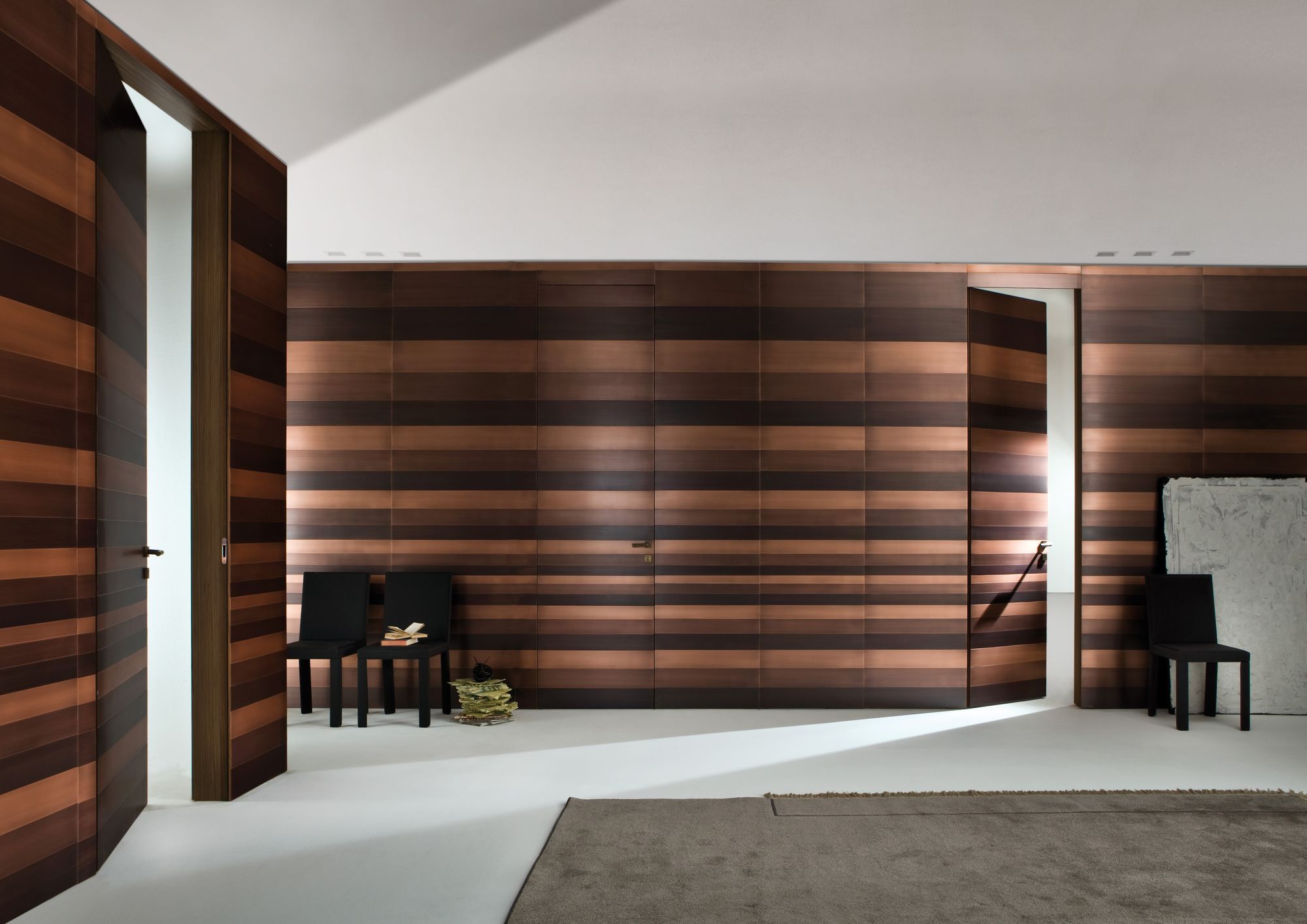Choosing the best interior doors for your home is a significant decision that affects more than just aesthetics. Interior doors play a vital role in setting the tone for each room, influencing privacy, sound insulation, and how space is utilized.
In this guide, we’ll explore the diverse types of interior doors available, their unique features, and the functionality each type brings. By the end, you’ll be equipped with the knowledge to choose doors that suit your style, needs, and budget, ensuring a comfortable and stylish living space.
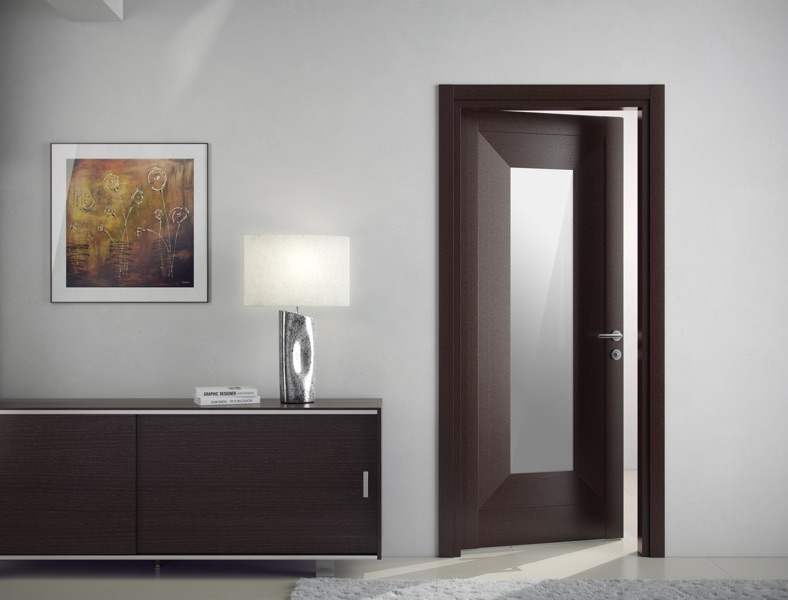
Types of Interior Doors: Styles and Functions
Interior doors come in a range of styles, each with distinct characteristics that can transform a room’s feel and function. Here are some of the most popular types:
1. Panel Doors
Panel doors are a best classic interior door choice with a timeless appeal, characterized by their raised or recessed panels. They typically feature wood grain patterns that add warmth and elegance, fitting well in both traditional and modern homes. These doors come in various designs, including two-panel, four-panel, and even six-panel versions, allowing homeowners to choose the ideal style for their interior.
- Versatility in Style: Panel doors suit a wide range of decor styles. In a traditional setting, they bring a sense of craftsmanship and heritage, while in a more contemporary environment, their clean lines add sophistication without overwhelming other design elements.
- Suitability for Home Interiors: Due to their variety in design, panel doors work well in living rooms, dining areas, and bedrooms, adding a polished look that enhances the room’s overall appeal.
2. Flush Doors
Flush doors are known for their smooth, flat surface, offering a minimalist look that blends seamlessly with modern decor.
- Sleek, Minimalist Look: Flush doors are ideal for modern or minimalist homes, where simplicity and clean lines are prioritized. They add an understated elegance to spaces, complementing contemporary interiors without detracting from other design elements.
- Common Uses and Room Placements: Flush doors are versatile and work well in bedrooms, bathrooms, and offices. Their smooth finish and clean edges allow them to integrate seamlessly into almost any room, enhancing the modern feel of a home.
3. Italian Doors
Italian doors, often featuring luxurious finishes and intricate detailing, are perfect for adding elegance and sophistication to any home. They frequently come with glass inserts, which contribute to a sense of openness and allow natural light to pass between rooms. Italian doors are often made with high-quality materials like solid wood or premium laminates, and they’re available in a variety of colors and finishes.
- Elegance and Luxury: Italian doors bring a sense of luxury and refinement to a space. With their elegant craftsmanship and use of materials, these doors are often chosen for formal areas or entryways that benefit from a touch of sophistication.
- Ideal Placement: Italian doors with glass inserts work beautifully as a transition between the living room and patio or dining area and garden. They create a spacious, airy feel that’s ideal for formal or transitional spaces.
4. Sliding Doors
Sliding doors are a popular choice for homeowners looking to save space or create a fluid transition between indoor and outdoor areas. Rather than swinging open, sliding doors move horizontally along a track, making them an excellent option for small rooms or areas where traditional doors might be impractical.
- Space-Saving Design and Functionality: Sliding doors are perfect for rooms with limited space, such as closets, laundry rooms, or even bathrooms. Since they don’t require swing clearance, they maximize usable space in compact areas.
- Varieties and Placement: There are several types of sliding doors, including single sliding doors, bypass sliding doors (ideal for closets), and pocket doors, which slide into a wall cavity, saving even more space. Sliding doors are also commonly used to connect indoor spaces with patios or decks, providing easy access to outdoor living areas.
5. Bifold Doors
Bifold doors are composed of two or more panels that fold in on themselves as they open, making them ideal for tight spaces. These doors provide a wide opening while taking up minimal floor space, making them especially useful for closets, pantries, and laundry areas.
- Compact Design: Bifold doors are excellent space-saving solutions. When open, they offer easy access to the full width of a closet or small room, while their folding mechanism keeps them neatly out of the way.
- Ideal Placements: Bifold doors are most commonly used for closets, laundry rooms, and small storage areas. Their compact nature also makes them a great option for maximizing space in apartments or other small living spaces.
6. Barn Doors
Barn doors bring a unique blend of rustic charm and modern appeal, adding a bold, statement-making element to any home. Typically mounted on a sliding track above the door frame, barn doors are perfect for spaces that require a creative or functional focal point. Their wide range of designs—from reclaimed wood to sleek metal—makes them versatile enough for both industrial and farmhouse-style interiors.
- Rustic or Industrial Appeal: Barn doors are known for their strong visual impact, combining rustic and modern styles seamlessly. They add character and personality, making them an ideal choice for rooms that need a statement piece or a distinctive design element.
- Best Placements: Barn doors work beautifully in transitional spaces such as home offices, dining rooms, and bedrooms. Because they slide open, they’re also a practical choice for dividing large open-concept areas, offering flexible separation while maintaining the open flow of the home.
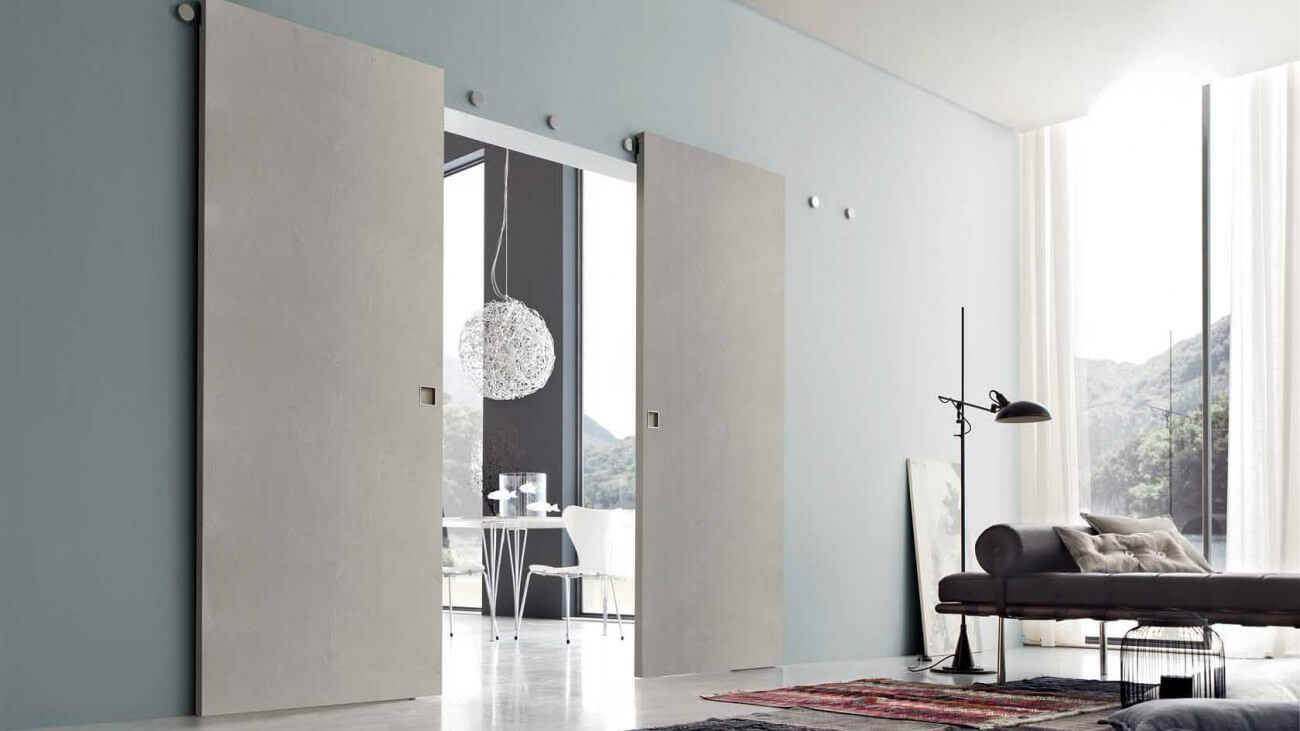
Choosing the Best Interior Door Material
The material of an interior door significantly impacts its durability, soundproofing, and aesthetic appeal. Here’s a closer look at four of the most popular materials to help you choose the one that best suits your needs and budget.
1. Solid Wood Doors
Solid wood doors are a best interior door choice, known for their durability, natural beauty, and soundproofing capabilities. These doors are crafted from a single type of wood, such as oak, cherry, or walnut, giving them a rich, organic look and feel. Their solid construction not only makes them highly durable but also excellent for blocking sound, adding a sense of privacy and tranquility.
- Durability and Aesthetic Appeal: Solid wood doors offer unmatched longevity, capable of withstanding years of use with minimal wear. Their natural wood grain brings a unique, elegant appearance that can be customized with various stains and finishes, allowing you to match or complement your home’s interior decor.
- Best Applications and Considerations: Solid wood doors are ideal for areas where privacy, sound insulation, and a touch of luxury are desired, such as bedrooms, home offices, and dining rooms. However, they tend to be pricier than other door types and require regular maintenance to preserve their beauty. The material is also susceptible to warping in high-humidity areas, so climate considerations are essential when choosing solid wood for bathrooms or kitchens.
2. Wood Veneer Doors
Wood veneer doors provide the aesthetic appeal of solid wood at a more affordable price. These doors are constructed with a core material, such as MDF (medium-density fiberboard) or particleboard, which is then covered with a thin layer of natural wood veneer. This construction gives the look and feel of real wood while reducing costs.
- Affordable and Aesthetic: Wood veneer doors are an excellent option for those who want the visual warmth and texture of wood without the expense of solid wood. The veneer layer can be stained or finished in various ways, offering a versatile design option that complements many interior styles.
- Common Use Cases and Limitations: While wood veneer doors are durable and suitable for most rooms, they’re slightly less resistant to wear and tear compared to solid wood. They are best used in low- to medium-traffic areas, like living rooms or hallways, where they are less likely to suffer from frequent impacts or heavy use.
3. Solid Core Doors
Solid core doors provide a middle ground between hollow core and solid wood doors, offering a balance of durability, soundproofing, and cost-effectiveness. These doors have a dense core material, typically MDF or particleboard, which is encased in a wood veneer or laminate surface.
- Balanced Durability and Cost: Solid core doors are sturdy and provide good sound insulation, making them a cost-effective alternative to solid wood. They are heavier than hollow core doors and provide more resistance to damage and warping, making them an ideal choice for rooms where durability is essential.
- Suitable Rooms and Budget Considerations: Solid core doors work well in bedrooms, bathrooms, and offices where privacy and sound control are needed. They are generally more affordable than solid wood doors while offering similar benefits in terms of soundproofing and structural integrity, making them a popular choice for mid-range budgets.
4. Hollow Core Doors
Hollow core doors are the most budget-friendly option, constructed with a lightweight frame and a hollow interior, often reinforced with cardboard or honeycomb material. They are ideal for cost-conscious homeowners or for areas where soundproofing isn’t a priority.
- Lightweight and Cost-Effective: Hollow core doors are easy to handle, install, and replace, making them suitable for DIY projects. Their low cost makes them an attractive option for large renovations where multiple doors are needed.
- Appropriate Uses: Due to their limited sound insulation, hollow core doors are best used in low-traffic areas like closets, utility rooms, or hallways. They’re less suitable for bedrooms, offices, or bathrooms where privacy and noise reduction are desired.

Material Matters: How to Choose Based on Room Needs
Selecting the best interior door material for each room requires an understanding of the specific needs of that space, especially when it comes to sound insulation and privacy. Choosing the right door material can significantly enhance comfort and functionality, especially in areas where noise control and privacy are crucial.
1. Sound Insulation Needs
Sound insulation is a key consideration when selecting doors for areas like bedrooms, home offices, and bathrooms, where minimizing noise can enhance comfort and privacy. Here’s how different door materials compare:
- Solid Wood Doors: With their dense, natural wood construction, solid wood doors offer the highest level of sound insulation. They effectively reduce noise transfer between rooms, creating a quiet and peaceful environment, especially important in spaces where privacy is desired, such as bedrooms and offices.
- Solid Core Doors: Solid core doors provide good soundproofing at a lower cost than solid wood. Constructed with a solid inner core, typically made of MDF or particleboard, they block a substantial amount of noise, making them suitable for bathrooms, offices, and shared living areas where privacy and noise reduction are valued. Solid core doors offer a solid balance of cost and performance in terms of sound insulation.
- Hollow Core Doors: As the most budget-friendly option, hollow core doors provide minimal sound insulation due to their lightweight construction. They are best suited for rooms where sound insulation is not a priority, such as closets, utility rooms, or pantries. While these doors are economical, they may not be the best choice for spaces where noise reduction is a concern.
2. Privacy Requirements
Privacy needs also play a major role in choosing interior doors, especially for areas like bedrooms and bathrooms, where a greater degree of seclusion is required.
- Solid Wood and Solid Core Doors: Both solid wood and solid core doors offer high levels of privacy due to their dense construction, making them ideal for bedrooms, bathrooms, and home offices. These doors provide a solid barrier that blocks both sight and sound, creating a secure, private atmosphere in spaces where solitude is essential.
- Doors with Glass Inserts: While glass insert doors (e.g., French doors) can add elegance and allow natural light to flow between spaces, they offer less privacy. Frosted or etched glass can provide some privacy while still allowing light to pass through. This makes them a good option for rooms where full privacy isn’t necessary, such as living rooms, dining areas, or connecting spaces.
- Hollow Core Doors: Hollow core doors, being less dense, offer minimal privacy. They are better suited for rooms where privacy is not a primary concern, such as storage areas, laundry rooms, or hallways.
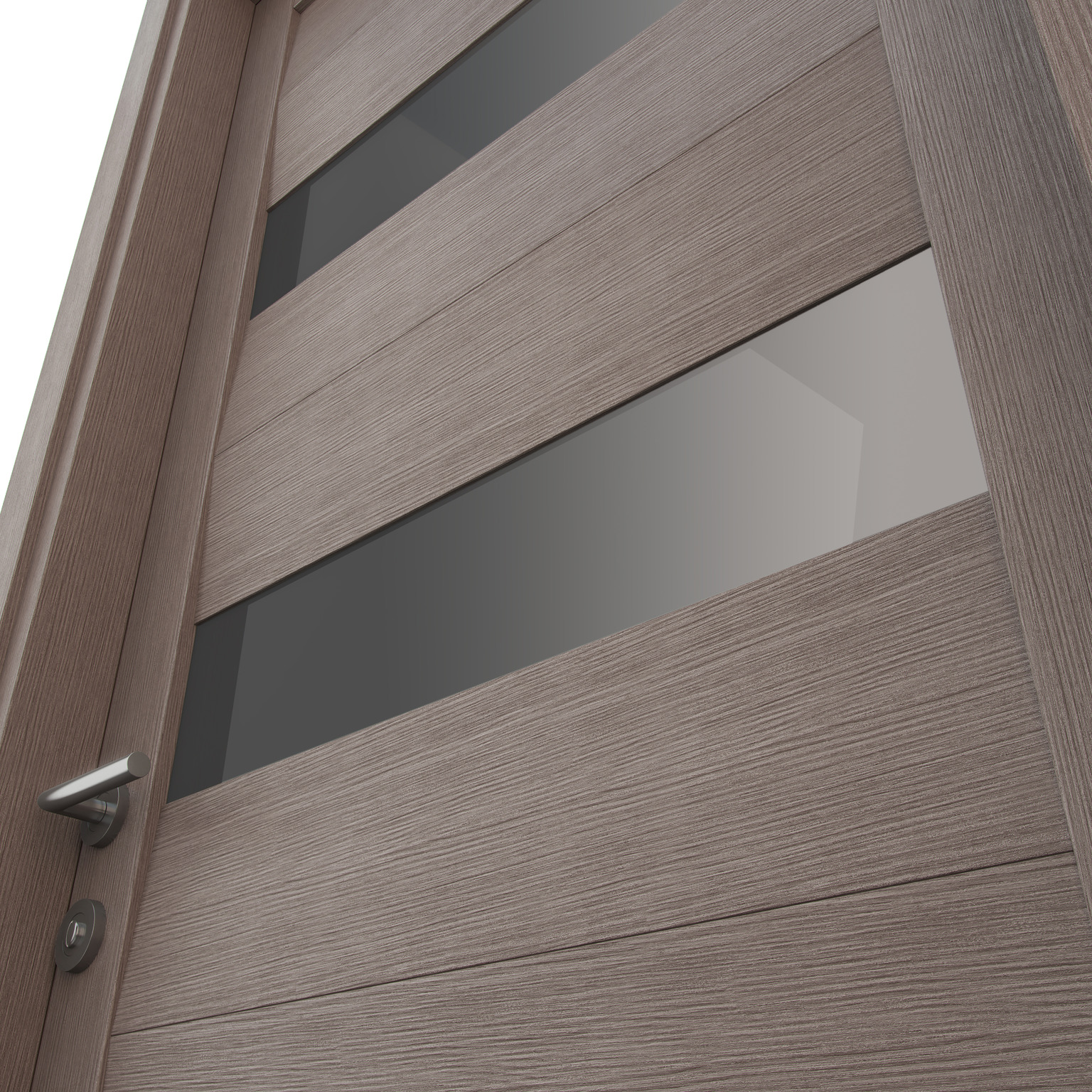
Aesthetic Considerations and Customization Options
The visual appeal of interior doors plays an essential role in enhancing the look and feel of a home. From finishes and colors to customization options, choosing the right aesthetics can complement the interior design and elevate the home’s overall ambiance.
1. Choosing the Right Finish and Color
Door finishes and colors can transform the aesthetic of a room, creating a seamless blend or a bold contrast with existing decor.
- Available Finishes: There are numerous finishes available for interior doors, each offering a different look and feel:
- Wenge: A dark, rich wood finish that adds warmth and sophistication, ideal for traditional or luxury interiors.
- Matte White: Perfect for minimalist or modern homes, matte white doors offer a clean and crisp look that blends well with light and neutral color schemes.
- Gray and Light Oak: These finishes work well in transitional or contemporary interiors, providing a neutral, subtle tone that pairs nicely with various color palettes.
- Mahogany and Hazel: These warm wood tones offer a classic, inviting look that adds depth and richness to spaces.
- Wood Species Options: The wood species used in door construction can also affect the visual appeal and durability:
- Oak: Known for its durability and attractive grain, oak is a popular choice for both traditional and modern interiors.
- Maple: A versatile wood with a fine, smooth grain, maple can be easily stained or painted to match any decor style.
- Matching Design Style: When choosing the finish and color of your doors, consider the overall style of your home:
- Modern and Minimalist: Opt for smooth finishes, such as matte or glossy white, with simple designs that maintain clean lines.
- Transitional: Choose versatile finishes, like light oak or gray, which complement both traditional and contemporary elements.
- Traditional or Rustic: Darker, textured finishes like mahogany or wenge can add warmth and character, making them an excellent choice for classic or rustic interiors.
2. Customization Options
Customizing interior doors allows homeowners to add unique touches, making the space more personal and visually interesting.
- Glass Inserts: Adding glass inserts can enhance a door’s aesthetic appeal while increasing the flow of light between rooms. French doors with clear glass inserts can create an open, airy atmosphere, while frosted or etched glass provides a touch of privacy. Glass inserts are particularly effective in areas like dining rooms, kitchens, or home offices where light and visibility add functionality and style.
- Decorative Panels: Decorative panels can add texture and detail to interior doors, creating a unique focal point. Raised or recessed panel designs bring a classic, sophisticated look to the door, making it an excellent choice for formal spaces like dining rooms or entryways.
- Unique Colors: While classic wood tones and neutral colors are popular, choosing a unique color for interior doors can make a bold statement. Deep navy, forest green, or even black doors can bring a modern edge, while soft pastels or bright colors can add a playful touch to children’s rooms or creative spaces.
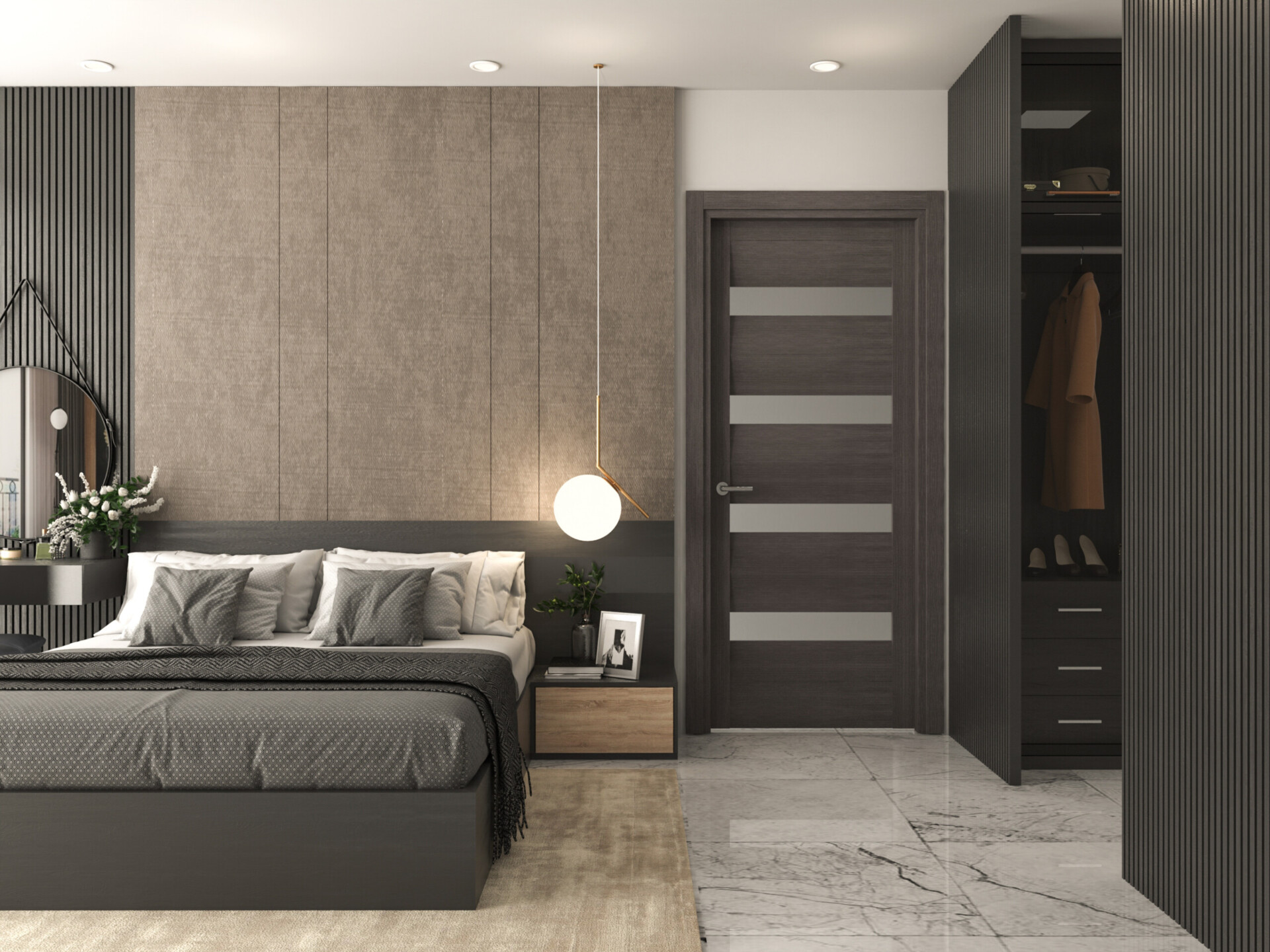
Hardware and Accessories: Function and Aesthetics
Choosing the right hardware and accessories for your interior doors can elevate both functionality and style. From essential items like hinges and knobs to protective accessories like kickplates, these elements complete the door’s look and play a critical role in its performance.
1. Essential Door Hardware
Door hardware is integral to both the functionality and aesthetics of your interior doors. Each component, from hinges to knobs, contributes to how a door operates and complements its style.
- Hinges: Hinges are responsible for the smooth opening and closing of the door. They come in various styles, such as concealed or exposed, and finishes, like brushed nickel, brass, or matte black, which can either blend in with the door or create a stylish accent. When choosing hinges, consider the weight of the door—heavier doors, like solid wood, require more robust hinges for support.
- Locks and Latches: Locks and latches provide security and privacy for certain rooms, such as bedrooms and bathrooms. There are different types of locks, including privacy locks (typically a simple push-button or twist-lock mechanism) and passage locks, which have a latch but no lock, suitable for rooms where privacy is not needed. Select a finish and design that aligns with the door’s aesthetic, keeping functionality in mind—privacy locks are ideal for bedrooms and bathrooms, while passage knobs or levers work well for closets and hallways.
- Knobs and Handles: The door knob or handle is often the first point of contact with a door, so it’s important that it’s both functional and visually appealing. Knobs and handles come in a range of styles, from classic round knobs to modern levers, and finishes such as chrome, oil-rubbed bronze, and polished brass. Choose a style that matches the design of the door and the room’s overall decor. For instance, sleek metal levers complement modern interiors, while ornate knobs pair beautifully with traditional settings.
2. Additional Accessories
Accessories enhance the practicality and protection of your doors, adding functional touches that can improve longevity and convenience.
- Door Stops: Door stops prevent the door from swinging too far and hitting walls or furniture, protecting both the door and surrounding items. They come in various forms, including floor-mounted stops, wall-mounted stops, and hinge-mounted options. Consider the door’s use and placement when selecting a type—wall-mounted stops are great for larger rooms, while hinge-mounted stops work well in compact spaces.
- Kickplates: Kickplates are metal or vinyl plates affixed to the bottom of the door, protecting it from scuffs and damage from shoes or other impacts. They’re especially useful in high-traffic areas or commercial spaces. Kickplates can be customized in finishes like brushed brass or stainless steel to match the rest of the door hardware, adding durability and a sleek, polished look.
- Door Viewers (Peepholes): Door viewers, or peepholes, allow you to see who is outside the door without opening it. While they’re most common on entry doors, they can also be useful on interior doors leading to a home office or other private areas. Door viewers come in different lens types for wide-angle visibility and can add an extra level of security to your interior door setup.
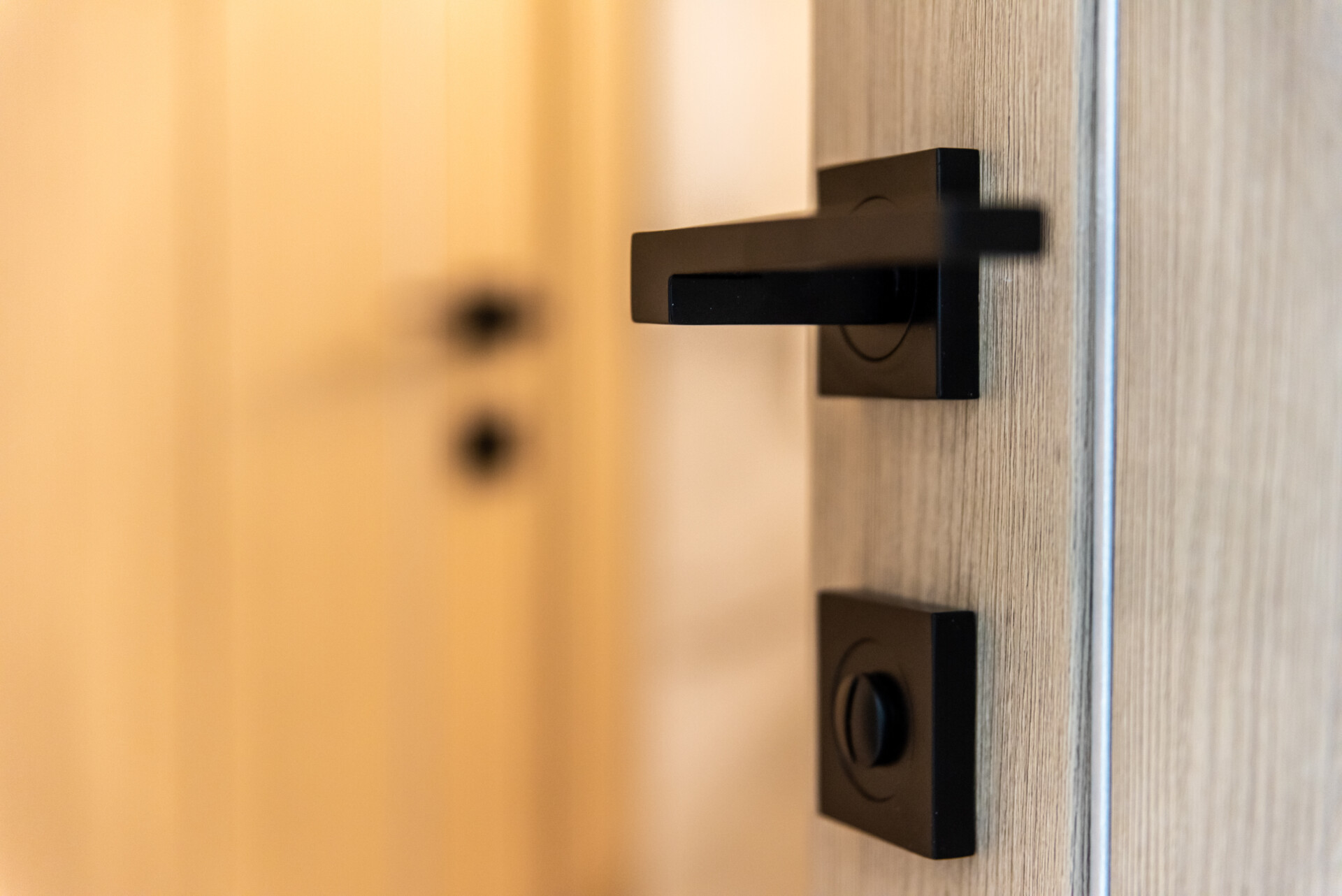
Explore the artistry and elegance of the best interior doors with ITALdoors. Our extensive collection offers high-end designs in finishes like Wenge, Matte White, and Mahogany, crafted to suit any home style. With customizable options and quality hardware, every ITALdoor is designed to transform your space with luxury and functionality. Discover the perfect door for your home—browse our selection today and let ITALdoors bring timeless Italian craftsmanship to your interiors.

